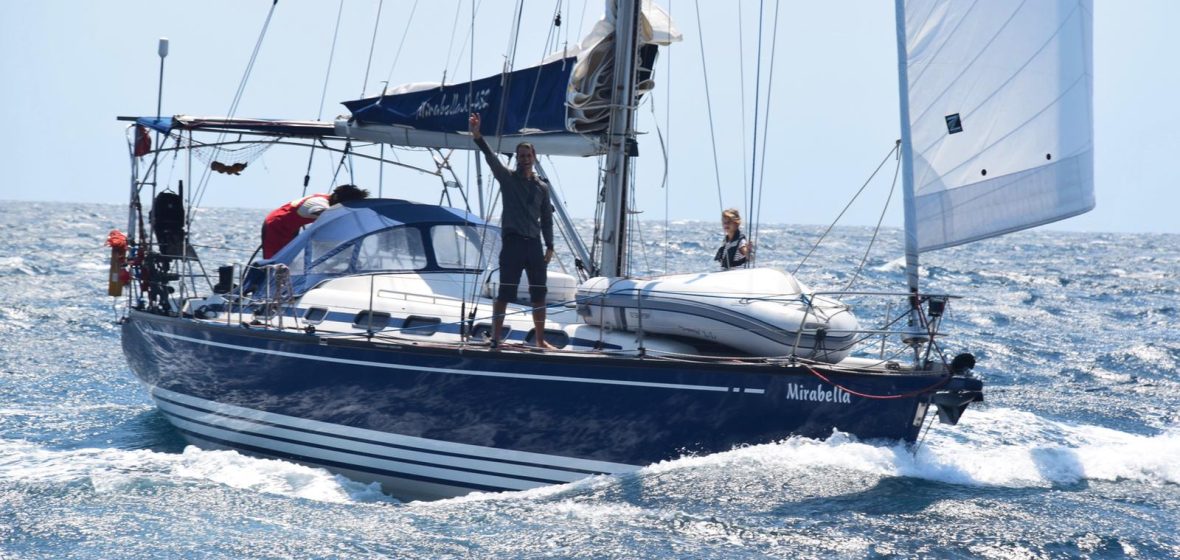March/April is very early in the season to sail from the Caribbean to the Azores. We knew that well before we started and yet we had all intention of going this early.
We sold our yacht whilst we were in the Caribbean and had agreed to hand it over to the new owner at the end of June in Italy. We wanted to be in the Mediterranean at the end of April to have as much time as possible in the Med before we finaly say goodbye to our beloved Mirabella.
So we drew up a plan of how to do it early in the season. We would leave the Caribbean in late March and aim more or less directly at Horta. Once we reach the designated ‘waiting’ area we would evaluate the weather forecast and only continue into the ‘High Wind Zone’ if we have a favourable weather forecast. If the forecast is not good enough, we would sail slow or stop.


Why is it more difficult in March/April?
The ideal time to cross from the Caribbean to Europe is in May/June. By then the lows and winterstorms in the North Atlantic are fewer and they don’t go too far south anymore. The Azores high is well estabilshed and keeps the lows up north. Later then June is not ideal cause the Hurrican risk starts to increase.
We split our voyage into three different stages.
1) Leaving the tradewind belt
2) Crossing the center of the high
3) Sailing east north of 30N
Tradewind belt
The first part was no problem but maybe a bit uncomfortable. To leave the trade wind belt we had to sail close hauled against the trade winds and a substantial swell. We found a window where it only took us 36 hours to get out of the tradewinds. It was managable.
Crossing the high
This wasn’t a real big deal either. Luckily Mirabella doesn’t need much wind to move. Once we left the tradewind belt the winds got lighter and we unreefed the sails and switched to the code zero. We managed to sail most of it but for two periods of about 24hours we needed the engine to continue.


Sailing east north of 30N
Here it started to get interesting. There is a real risk of strong lows tracking across the Atlantic north of 30N. In Winter and well into spring this risk is significantly higher then later in summer.
When one starts in the caribbean, this sailing area is 1000nm and more away. This means there is no real forecast for this area when you leave the caribbean.
Our strategy was to cross the tradewind belt and the center of the high and then decide based on the latest forecast if we shall continue. Before we left I defined that we only cross 32N/40W when we have a acceptable forecast all the way to Horta.

How did it work out?
When we were about 1500nm away from Horta the first forecasts started to indicate that a very powerfull low was about to cross our path. We kept sailing for another two days until we got further clarity about this low. Once it was reasonably certain that the low will come with very strong winds (50kts wind, gusts more then 65kts) we slowed down and ultimately stopped for 3 days. It was very awkward to heave-to in the middle of the Atlanic, 1000nm from anywhere. We did not want to cross 32N 41W before the center of the low had passed.

This strategy worked out perfectly. We kept enough south to avoid the very strong winds and started sailing as soon as the front was near. We experienced 30kts wind with gusts just below 40kts. Strong winds for sure, but nothing dangerous. Without stopping we would have seen 50+kts.
Thanks to todays satellite communication and weather forecasting we have great possibilties of planning and executing save ocean crossings even early in the season. The key is to understand the weather pattern before departure and draw up an action plan for the different possible forecasts.

